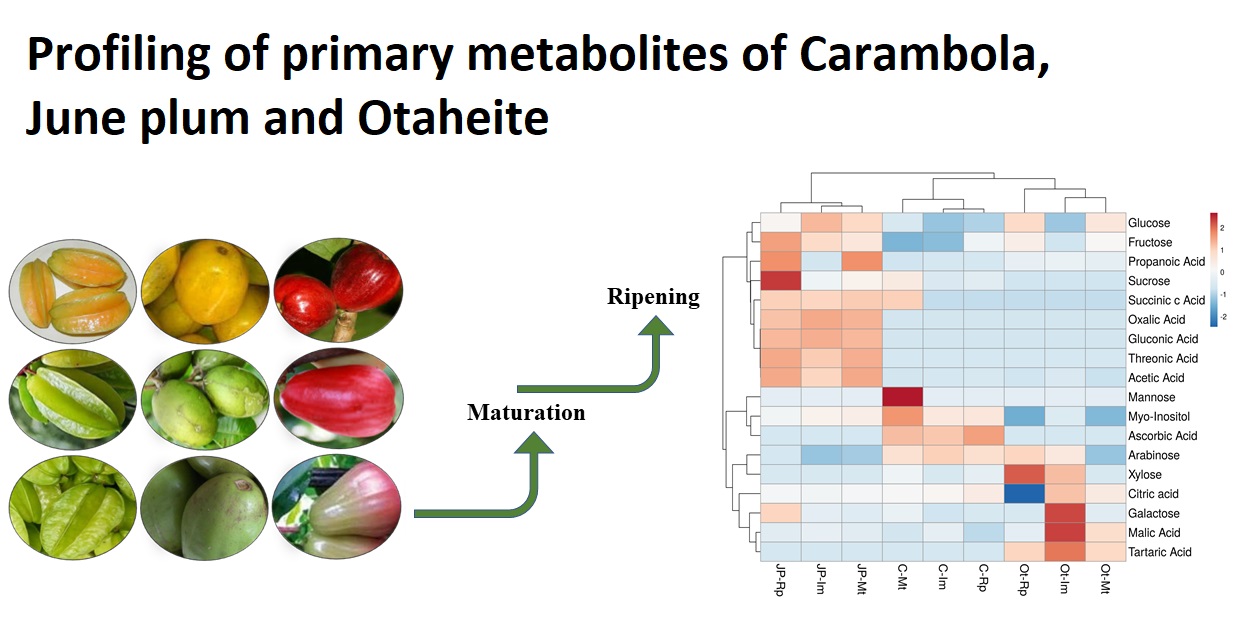Profiling of primary metabolites of Averrhoa carambola, Spondias dulcis and Syzygium malaccense fruits revealed underpinning markers during “on-tree” maturation and ripening stages

Published 2022-01-14
Keywords
- acids,
- Carambola,
- June plum,
- maturation,
- otaheite
- ripening,
- sugars ...More
How to Cite
Abstract
The study aimed to profile and quantify sugars and organic acids metabolites in carambola, June plum and otaheite fruits during three different “on tree” stages: immature, green-mature and ripe stages. Metabolites were profiled and quantified by gas chromatography-mass spectrometry (GC-MS). Results showed that glucose, fructose, galactose, arabinose, and the sugar alcohol myo-inositol were detected in all fruits, while sucrose was detected in carambola and June plum only. Organic acids identified in all fruits were malic acid, citric acid, propanoic acid, and acetic acid. Comparatively, June plum showed the highest content of total sugars and carambola the lowest, while the highest total in organic acids content was found in otaheite and the lowest in carambola. On the other hand, most sugars increased during ripening of the three fruits, while organic acids decreased. Total sugars increased by 37%, 8% and 46% in ripe carambola, June plum and otaheite, respectively. Total organic acids decreased by 20% and 49% in ripe carambola and otaheite, while they slightly increased by 3% in ripe June plum. Furthermore, sugars/organic acids ratio in all fruits increased during maturation and ripening stages. Principal component analysis (PCA) showed two main groups of highly scoring metabolites, while the hierarchical cluster analysis (HCA) showed that the metabolites were grouped into three main clusters. Conclusively, results showed that glucose, fructose, malic acid and tartaric acids were the key marker metabolites of the maturation and ripening stages of the three fruits.





